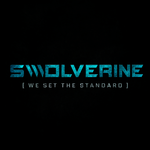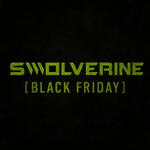Semax and Selank are short, intranasal neuropeptides that came out of Russia’s peptide-drug program and the Institute of Molecular Genetics (RAS). Both are registered medicines in the Russian Federation (Semax classified as a nootropic; Selank as an anxiolytic), with decades of lab and clinical use there—yet very different “feels” when you actually use them.
Here’s how to think about them in practice—fast, clear, and useful:
Think of Semax as the sharper, pro-focus tool and Selank as the calmer, anti-anxiety stabilizer. (For background on their development and registration: Deigin — Pharmaceutics; on Selank’s origin at IMG RAS: Volkova — Frontiers in Pharmacology.)
Mechanistically, the split is clear. Semax is an ACTH(4–10) analog that’s been shown to upregulate neurotrophins (like BDNF) and tweak dopaminergic/serotonergic signaling—one reason it’s studied for cognitive recovery and post-stroke support (Dolotov — Brain Research; Limborska — Springer (open via NCBI)). Selank, a tuftsin-derived heptapeptide, leans the other way: GABA-centric modulation with additional effects on serotonin-related genes, translating to anxiolysis without classic benzo-style sedation (Volkova — Frontiers in Pharmacology).
At a glance (so you can choose fast):
→ If you need learning, memory, and task engagement under pressure? You’ll likely look to Semax first. (Dolotov — Brain Research).
→ If you need steady mood, less edge, and stress resilience—without getting foggy? That’s Selank’s lane. (Volkova — Frontiers in Pharmacology).
In the sections that follow, we’ll unpack origins, mechanisms, benefits, safety, dosing norms, and how to decide (or stack) based on your goal—using primary literature so you can separate signal from hype.
What Is Semax?
Semax didn’t appear out of thin air—it was purpose-built inside Russia’s peptide-drug program at the Institute of Molecular Genetics (RAS) and has seen real-world clinical use there, especially in ischemic stroke care (Deigin — Pharmaceutics). Chemically, it’s a heptapeptide analog of the ACTH(4–10) fragment (Met-Glu-His-Phe-Pro-Gly-Pro), engineered to keep the neuromodulatory upside without the hormonal baggage (Tsai — Medical Hypotheses).
In Russian clinical practice, Semax shows up where you want brains to bounce back and lock in: cognition and neuroprotection. Human post-stroke data report better functional recovery alongside higher plasma BDNF—useful context for why the drug has traction there (Gusev — Zhurnal Nevrologii i Psikhiatrii; Deigin — Pharmaceutics).
Mechanistically, the through-line is clear: Semax upregulates BDNF/TrkB and tunes dopamine/serotonin—a pairing that maps to sharper learning, stronger memory encoding, and post-injury plasticity (Dolotov — Brain Research; Dolotov — Journal of Neurochemistry).
→ Plain-English takeaway: Semax is the pro-focus, pro-plasticity side of the duo—built to turn up neurotrophic signaling and keep your attention systems online when the pressure spikes.
What Is Selank?
If Semax is the gas pedal, Selank is traction control. It’s a heptapeptide (Thr-Lys-Pro-Arg-Pro-Gly-Pro) derived from the immune peptide tuftsin, extended to boost stability and duration—and, like Semax, developed at the Institute of Molecular Genetics (RAS) (Volkova — Frontiers in Pharmacology).
Clinically in Russia, Selank is positioned as an anxiolytic/anti-stress agent—think benzodiazepine-like calming without the classic sedation or dependence profile at therapeutic ranges (Filatova — Frontiers in Pharmacology).
Under the hood, Selank leans GABA-ward while also nudging serotonin pathways. Evidence points to allosteric modulation of the GABA_A system and rapid shifts in neurotransmission gene expression; rodent work also shows effects on serotonin metabolism and monoamines in key brain regions (Volkova — Frontiers in Pharmacology; Semenova — Eksp Klin Farmakol).
And it doesn’t stop at the CNS. Selank and its fragments have been shown to alter expression of inflammation-related genes (including Bcl6 networks) in spleen and hippocampal tissue—evidence for stress–immune crosstalk in its signature (Kolomin — International Immunopharmacology; Kolomin — Journal of Neuroscience Methods).
→ Bottom line: Selank is the calming, resilience-first counterpart—GABA-leaning anxiolysis with supportive touches on serotonin and immune-gene pathways, so you feel steady, not sedated.
How Selank And Semax Work
You’ve got the gist: Semax leans “go mode,” Selank leans “steady mode.” Now let’s make it practical by splitting the science into two plain-English sections—how it works and what that actually affects in the real world.
Semax — How it works (neurotrophin-first, pro-focus)
Semax is an ACTH(4–10) analog that behaves less like a hormone and more like a neuroplasticity accelerator. In brain regions tied to learning and memory, it’s been shown to upregulate neurotrophin programs—think BDNF/Trk signaling plus related genes like BDNF, NGF, and NT-3—while also tuning dopamine and serotonin in ways that help you lock in and stay on task. That combo explains why Semax shows up in cognition research and post-stroke contexts.
→ Key pathways: BDNF/Trk ↑, DA/5-HT modulation, pro-plasticity gene expression — Dolotov — Brain Research; Dmitrieva — Journal of Neurochemistry (open via PMC); Eremin — Neurochemical Research
What this affects:
→ Learning & memory encoding feel faster/smoother (plasticity support)
→ Focus/attention stability under load (monoamine support)
→ Recovery & adaptation in stressed or injured neural tissue (BDNF-linked) — Dolotov — Brain Research; Dmitrieva — Journal of Neurochemistry
Selank — How it works (GABA-leaning, anti-stress)
Selank takes a different route. As a tuftsin-derived heptapeptide, it allosterically influences the GABA_A system, creating a fast, calming signal without classic sedative baggage. On top of that, it nudges serotonin-related pathways and even immune-gene expression, which fits the real-world feel: calmer, steadier, more resilient under stress.
→ Key pathways: GABA_A modulation, serotonin pathway effects, immune-gene shifts — Volkova — Frontiers in Pharmacology; Filatova — Frontiers in Pharmacology; Kolomin — Int. Immunopharmacology
What this affects:
→ Anxiety & “edge” down, without fog (GABA signature)
→ Mood steadiness in day-to-day stress
→ Stress-immune crosstalk (gene-level signals), which may help with resilience — Volkova — Frontiers in Pharmacology; Kolomin — Int. Immunopharmacology
The practical split (how it feels & when to pick)
If you want to learn faster, concentrate, and drive tasks forward, Semax’s pro-plasticity + monoamine tune is the better fit. If you need to take the edge off and stabilize mood—especially under chronic stress—Selank’s GABA-leaning profile shines (and notably without classic benzo-style sedation). This isn’t just “vibes”; it lines up with translational work and Russian clinical positioning.
→ Evidence snapshots: Gusev — Zh. Nevrol. Psikhiatr.; Kasian — Bulletin of Experimental Biology and Medicine
Benefits of Semax
-
Learn faster, remember more (especially when you’re tired). In a human volunteer study, intranasal Semax sharpened attention and short-term memory—most noticeably under fatigue. That lines up with its role in nudging brain plasticity signals like BDNF. — Kaplan — Neuroscience Research Communications, Dolotov — Journal of Neurochemistry
-
Dialed-in focus and “get it done” energy. Semax tweaks dopamine and serotonin in a way you actually feel—more engaged, less drifty—without veering into jittery. That’s why many describe it as the more “on” member of the duo. — Eremin — Neurochemical Research
-
Backstop for stressed brains (neuroprotection). From animal models to translational work, Semax upregulates neurotrophins (BDNF/Trk) and pushes ischemia-disrupted genes toward neuronal survival and synaptic function. In Russian stroke settings, courses are associated with higher plasma BDNF and better early recovery—context for why clinicians there use it. — Dmitrieva — BMC Genomics, Sudarkina — Int. J. Mol. Sci., Gusev — Zhurnal Nevrologii i Psikhiatrii
-
Mood support when stress runs high. Preclinical data suggest Semax can normalize anxiety- and depression-like behavior when those states are experimentally elevated—likely via monoamine tuning—without sedative drag. — Levitskaya — Biology Bulletin, Eremin — Doklady Biological Sciences
Why it matters: You’re getting plasticity (BDNF) + monoamine support—a combo that helps you learn under pressure, focus longer, and protect performance when the brain’s under fire.
Benefits of Selank
-
Anxiety down, clarity intact. Reviews out of Russian clinics put Selank’s calming effect in benzodiazepine territory—minus the classic sedation, muscle relaxation, or dependence baggage. In plain English: you feel steadier, not sleepy. — Volkova — Frontiers in Pharmacology, Filatova — Frontiers in Pharmacology
-
Holds the line under chronic stress. In a UCMS (unpredictable chronic mild stress) model, Selank alone reduced heightened anxiety, and Selank + diazepam hit the strongest anti-anxiety mark—textbook GABA synergy that reads as calm without the fog. — Kasian — Bulletin of Experimental Biology and Medicine
-
Built-in resilience pathways (GABA + serotonin). Transcriptomic work shows rapid shifts in GABAergic genes after Selank—mirroring the GABA signature—alongside effects on serotonin signaling. Translation: smoother mood, fewer spikes, no dulling. — Volkova — Frontiers in Pharmacology, Filatova — Frontiers in Pharmacology
-
Touches the stress–immune axis. In patients with generalized anxiety/neurasthenia, a 14-day course shifted Th1/Th2 cytokine balance—early evidence that Selank doesn’t just calm the mind; it may nudge immune tone in parallel. — Uchakina — Bulletin of Experimental Biology and Medicine
-
Hints for cognition when stress derails memory. In age-related, alcohol-linked memory disturbance models, a tuftsin-analogue course (Selank family) improved memory metrics—with signs BDNF may play a role. It’s an encouraging signal, not a blanket cognitive claim. — Kolik — Bulletin of Experimental Biology and Medicine
Bottom line: Selank is your calm-but-clear regulator—great for smoothing the edges, supporting mood, and staying steady day to day without the lights-out feel of sedatives.
Selank vs Semax — Side Effects and Dosing
→ Overall tolerability: Both Selank and Semax are generally well-tolerated in Russian clinical settings. Data outside Russia are limited, and long-term safety has not been firmly established (Alzheimer’s Drug Discovery Foundation, Cognitive Vitality).
Semax — Side Effects
→ Local nasal irritation: The most common side effect is mild nasal mucosa irritation from intranasal use (ADDF, Cognitive Vitality).
→ Less frequent events: Reports note nasal cavity discoloration (~10%) and mild increases in blood glucose among diabetic patients (~7.4%). Serious adverse effects are not consistently documented (Geropharm, Semax 0.1% package insert).
Dosing (clinical practice): 0.1% solution, 1–2 drops per nostril, 2× daily for 10–16 days depending on indication. Use caution in patients with diabetes due to possible glycemic effects (Geropharm, Semax 0.1% package insert).
Selank — Side Effects
→ Taste/odor issues: Some users report an unpleasant taste or smell when solution drips into the throat; proper application reduces this (CosmicNootropic, Selank Product Monograph).
→ CNS profile: Unlike benzodiazepines, Selank shows anxiolytic effects without sedation, tolerance, or withdrawal in comparative studies (Kasian, Behavioral Neurology; Zozulia, Zh Nevrol Psikhiatr).
→ Rare events: Labels note possible allergic reactions or transient headache, but no evidence of dependency or organ toxicity (CosmicNootropic, Selank Product Monograph).
Dosing (clinical practice): 0.15% solution, 2–3 drops per nostril, 3× daily for 10–14 days, followed by a 1–3 week break before repeating if necessary (CosmicNootropic, Selank Product Monograph).
Comparison Takeaway
→ Semax: Primarily nasal irritation and mild glucose changes in diabetics.
→ Selank: Occasional taste/odor discomfort and rare allergic reactions, but with an anxiolytic profile free from benzodiazepine-like risks.
Selank vs Semax — Dosing Protocols
Semax Dosing
→ General cognitive / neuroprotective use: Clinical instructions for Semax 0.1% recommend 1–2 drops per nostril, 2× daily, for 10–16 days depending on indication (Geropharm, Semax 0.1% package insert).
→ Post-stroke or neurological recovery: Higher-strength formulations (1%) may be prescribed in Russia, typically 2–3 drops per nostril, 3× daily, for up to 10 days (Alzheimer’s Drug Discovery Foundation, Cognitive Vitality).
→ Safety notes: Avoid combining with vasoconstrictive nasal sprays. Diabetic users should monitor blood glucose, as mild elevations have been documented (ADDF, Cognitive Vitality).
Selank Dosing
→ Anxiolytic / stress relief: Clinical guidelines for Selank 0.15% solution suggest 2–3 drops per nostril, 3× daily, for 10–14 days (CosmicNootropic, Selank Product Monograph).
→ Repeat cycles: Protocols recommend taking a 1–3 week break before repeating another course, depending on therapeutic goals (CosmicNootropic, Selank Product Monograph).
→ Administration tips: Drops should be directed onto the nasal mucosa rather than tilted back into the throat to reduce taste/odor irritation.
Comparison at a Glance
→ Semax: Often used in shorter neurological or cognitive courses (10–16 days).
→ Selank: Designed for anxiety/stress regulation, with slightly longer repeatable cycles (10–14 days + rest period).
⚠️ These dosing protocols are based on Russian clinical practice and product inserts, not FDA-approved guidelines. Always consult a qualified healthcare professional before use.
Selank vs Semax — Legal Status
→ Not FDA-approved in the United States: Neither Selank nor Semax has approval from the U.S. Food and Drug Administration. They are not recognized as prescription medications or dietary supplements in the U.S. marketplace (FDA, Drugs@FDA Database).
→ Russia and CIS countries: Both peptides are registered pharmaceuticals in Russia and certain Commonwealth of Independent States (CIS) countries. Semax is marketed as a neuroprotective and nootropic agent, while Selank is prescribed for anxiety and stress-related disorders (Geropharm, Official Product Information).
→ European Union and UK: Neither compound is authorized as a medicine, and sales are typically restricted. Importation may fall into a gray legal area under “research chemical” exemptions.
→ United States market reality: Selank and Semax are sold online as research peptides, often labeled “not for human use” to comply with regulatory loopholes. Quality, purity, and legality can vary between vendors (Nutt, Journal of Psychopharmacology).
→ WADA and sports competition: Neither peptide currently appears on the World Anti-Doping Agency (WADA) Prohibited List, but athletes should exercise caution as rules evolve and novel nootropics or peptides may be added in future updates (WADA, Prohibited List 2025).
Conclusion
Selank and Semax are two of the most well-studied Russian-developed peptides, yet they fill different roles in practice.
→ Semax is positioned as a neuroprotective and cognitive-enhancing compound, with dosing protocols aimed at supporting recovery from neurological conditions and boosting focus or memory. Its side effects are mostly tied to nasal irritation and potential glucose changes in diabetics.
→ Selank is designed as an anxiolytic alternative, targeting stress and anxiety without the dependency risks of benzodiazepines. Reported side effects are minimal, most often mild taste or odor irritation, with no consistent evidence of sedation, tolerance, or withdrawal.
Legally, both peptides remain approved pharmaceuticals in Russia but are considered unregulated research chemicals in the United States and Europe. Neither is FDA-approved, and use outside of clinical trials is limited to gray-market access.
Bottom line:
-
Choose Semax if the goal is sharper cognition, neuroprotection, or post-stroke recovery.
-
Choose Selank if the goal is managing stress, anxiety, or mood stabilization without sedative baggage.
Both compounds show promise, but their long-term safety and efficacy in Western populations remain under-researched, leaving their use primarily in experimental or clinical settings abroad.
Selank vs Semax — FAQ
Are Selank and Semax safe to use?
Both peptides are generally well-tolerated in Russian clinical practice, but they are not FDA-approved and lack long-term safety data outside of Russia. Reported side effects are mild and include nasal irritation for Semax and taste/odor issues for Selank (Alzheimer’s Drug Discovery Foundation; CosmicNootropic, Selank).
Which is better for anxiety?
→ Selank: Developed specifically as an anxiolytic with studies comparing its effect to benzodiazepines but without the risks of tolerance or withdrawal (Kasian, Behavioral Neurology).
→ Semax: While it may improve mood and cognitive performance, it is not primarily an anti-anxiety drug.
Which is better for focus and cognition?
→ Semax: Evidence supports its use for neuroprotection, attention, and memory, particularly in clinical populations such as post-stroke patients (Alzheimer’s Drug Discovery Foundation).
→ Selank: May indirectly improve focus by reducing anxiety, but it is not classified as a cognitive enhancer.
Can athletes use Selank or Semax in competition?
Neither peptide is currently listed on the World Anti-Doping Agency (WADA) Prohibited List. However, athletes should remain cautious, as peptide regulations can change quickly (WADA, Prohibited List 2025).
Are these peptides legal to buy online?
In the United States and Europe, Selank and Semax are sold online as research chemicals, often labeled “not for human use.” In Russia and CIS countries, they are registered pharmaceuticals available by prescription (Geropharm, Official Information).







